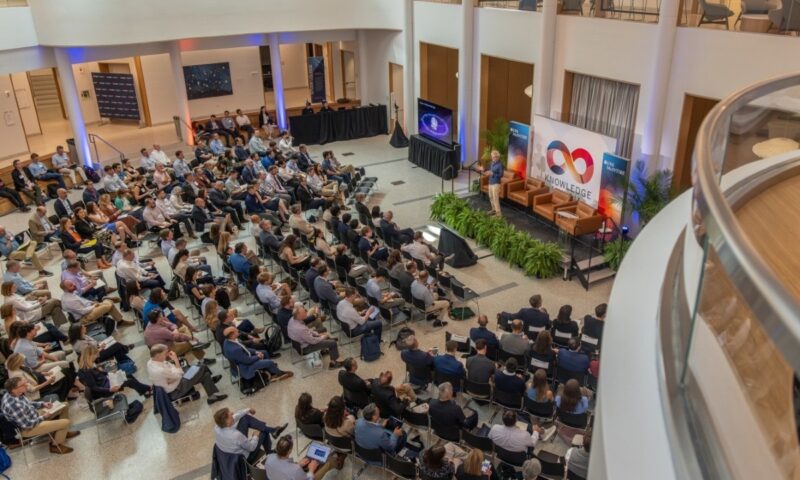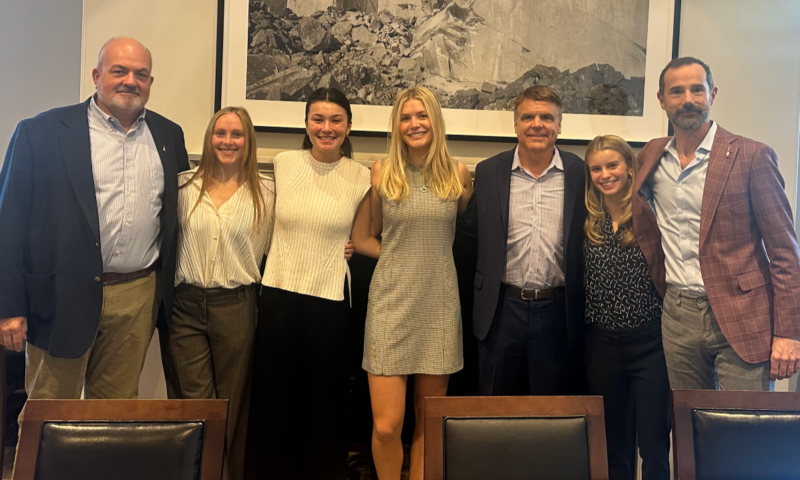McIntire’s hallmark program, the Integrated Core Experience, is well regarded for providing students with opportunities to create innovative solutions to real-world challenges as they implement knowledge from multiple business disciplines.
Perhaps it is unsurprising then, that in the fall of 2020, the pandemic thrust its unwelcome omnipresence on to a third-year project at the Commerce School, compelling Professor Ryan Nelson to task student pairs in Blocks 1 and 2 with analyzing UVA’s health-monitoring process via the HOOS Health Check and COVIDWise apps.
Nelson says the process improvement assignment has been part of the curriculum of Strategy and Systems for 22 years, but that the specific process up for analysis changes to reflect current problems and methodologies. When designing this year’s project, he spoke with one of the development leads of the HOOS Health Check app, the Chief Product Officer at WillowTree.
“Last year, it was the e-scooter rental process around Grounds, and in prior years, we have often focused on McIntire processes such as academic advising, admissions, and career services. When I was Associate Dean for the Undergraduate Program, we utilized some of the students’ process improvement recommendations,” he says, noting that academic advising was left transformed by the insightful suggestions of third-years.
With such a pressing health issue at hand, Nelson hoped to address the common problem of the adoption rate of technology. “All too often, people and companies develop a technological solution without considering the human factor, which is typically more important than the technology itself.”
To determine the perspectives about the health apps, Nelson’s students researched the health-monitoring process and conducted empathy interviews, mapping out user attitudes about both apps. Based on those findings, they imparted appropriate recommendations, considering aspects such as practicability and potential impacts.
As both the University, and indeed the world, grapple with the problems inherent in slowing the virus spread, the Commerce students reached out to fellow students from across UVA to discover how the University’s custom symptom-reporting app and the Virginia Department of Health’s (VDH) exposure-notification app were faring in perceptions and actual use in the fight to contain COVID-19.
Tell Us How You Really Feel
Students started with research through empathy interviews in order to uncover the true feelings of their University colleagues regarding the two health apps.
Emily Kruse (McIntire ’22) says that choosing subjects quickly moved from initial ideas about picking the brains of friends to finding other students who offered disparate perspectives that might better inform the work that she and her partner, Christopher Sedlacek (McIntire ’22), were undertaking.
“We knew that selecting subjects with different living situations, hometowns, genders, ages, and COVID experiences would give us a well-rounded evaluation of how the app might be used by different students,” Kruse says.
Sedlacek says that in order for the empathy interviews to be successful, they had to feel more like a conversation than a formal interview, so that the subjects were comfortable enough to share their honest opinions. “Since our interviews were over Zoom, Emily and I had to work hard to create an environment that was comfortable for our subjects. To accomplish that, we made sure to ask our questions in the most non-discrete manner, and we allowed the interviewee to lead most of the conversation.”
Esha Jain (McIntire ’22), who partnered with Miyah Shatz (McIntire ’22) on the assignment, says she also found that the pitfall of offering leading questions was one of the biggest roadblocks to gathering useful research. “Our interviewees prefaced their interviews by saying that they probably couldn’t contribute anything valuable to our project, which obviously wasn’t true,” Jain says, noting that some small talk helped create a casual atmosphere.
Shatz adds that getting honest, emotional responses over Zoom proved to be a significant barrier, but an issue they overcame by asking follow-up questions—without leading the participants.
Commerce Skills at Work
In the interviews, both teams noted subjects felt there was room for improvement with the two apps, presenting a clear opportunity to apply many of the skills the teams have been learning across their McIntire coursework.
Tools like empathy maps, service blueprints, lean user experience canvases, and process diagrams gave students methods for organizing information, and then sharing them with Nelson through the visual collaboration platform Miro.
“Every aspect of our project and our recommendations was supported by the concepts and tools we had learned about in our courses at McIntire,” says Jain. “Additionally, my experiences in McIntire empowered me to feel like I had the skills and understanding to successfully present achievable and effective research-driven recommendations about the University’s COVID-19 response.”
Both Kruse and Sedlacek note that they have been learning about empathic design, which directs product development by users’ feelings, in both Integrated Core Experience courses and their Product and Project Management course with Professor Chris Maurer.
“It was really exciting to work to solve a problem that has never been solved before,” Sedlacek says. “In class, we frequently discuss business cases, but for the most part, they have written solutions at the end of them. For this research project, we were tasked with writing the solution on our own.”
Kruse says that the emphasis McIntire places on communication and iterative improvements was central to their project’s success. “At the core of our recommendation was the empathy interviews. These interviews would not have been as insightful without using effective, clear, yet thoughtful communication with the interviewees. Likewise, the idea of feedback and constant iterations came into play, as Chris and I had to figure out how to best use the Miro tool and the framework provided, with the help of intuition, external research, and collaboration,” Kruse says. “The ‘do-it-yourself’ spirit helped me to learn the process more deeply and left me with a feeling of accomplishment.”
So what did they learn from the process improvement assignment? Jain, Sedlacek, and Kruse agree that learning about human-centered approaches to problem solving is essential to evaluating and meeting users’ needs.
Shatz believes a major takeaway was that, in real life, there is no perfect solution and there is always another chance to enhance a product and better satisfy the needs of those who use it.
“You can understand everything about a process, perfect it, and think of every detail, but that still doesn’t mean users or consumers are going to want it. Empathy maps help you get to the core of your users’ feelings, and can be some of the most valuable information for improvement,” she says, noting that she’s much more proficient in how both apps work, which has even helped to reduce some of her own anxiety about the spread of COVID-19 on Grounds.



